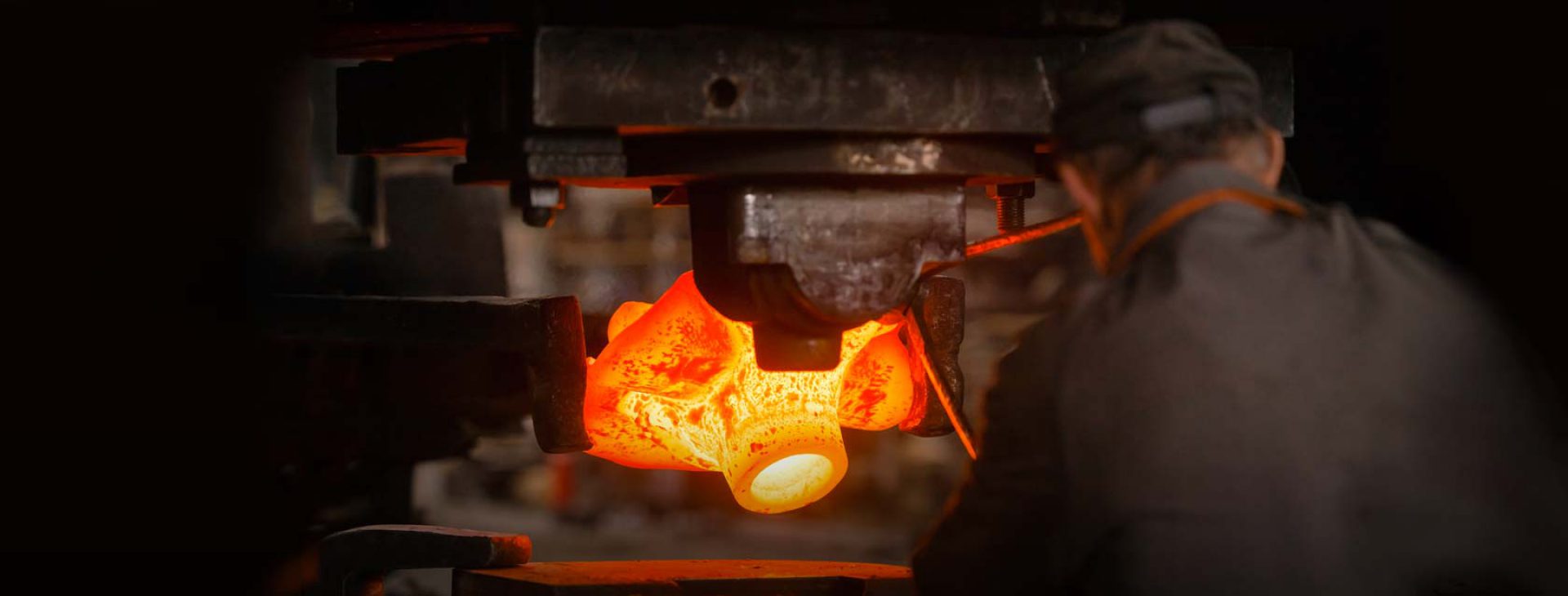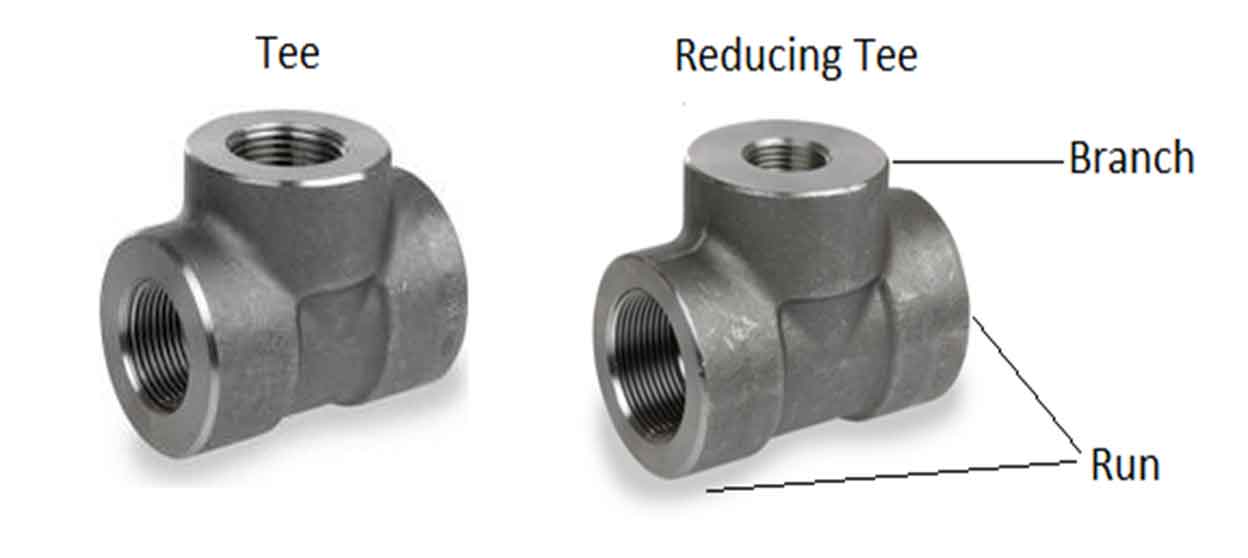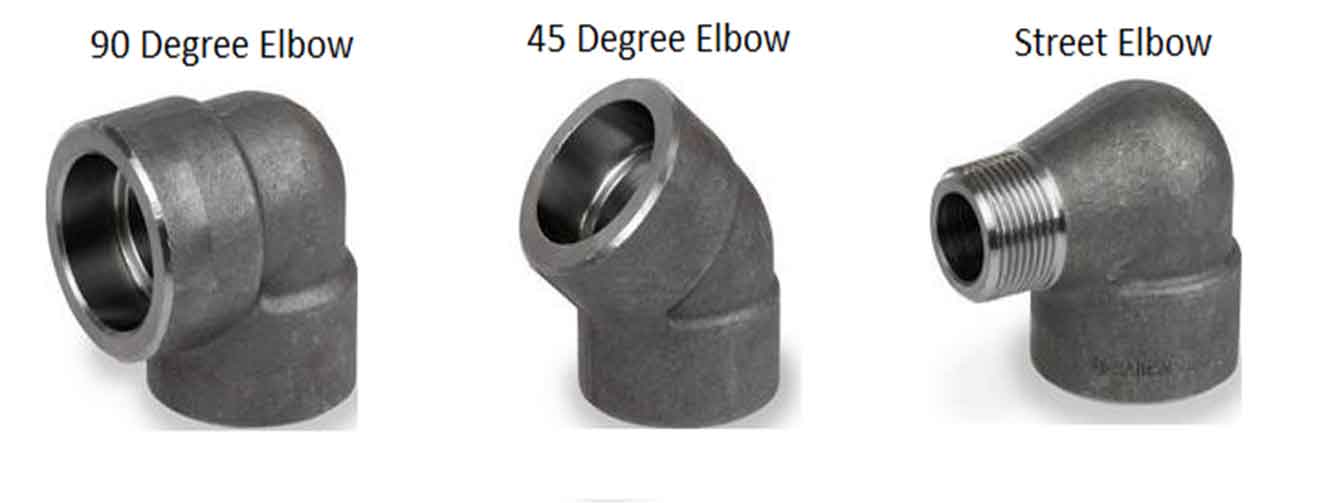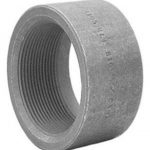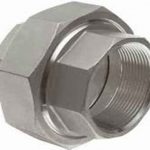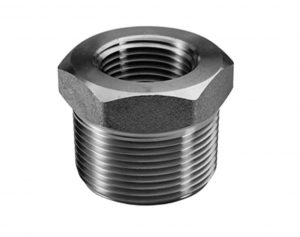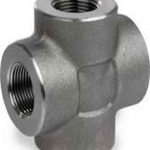Forged steel fittings are the fittings made by forged steel. The process of manufacturing forged steel fittings include: cutting and heating billets, put pressure on heated billets under dies into desired shape, trimming and shot blasting. Then machine forged blank fittings for net shape and dimensions.
According to the applications of forged steel fittings, they are available in threaded and socket weld end connections. The dimensions for socket weld forged steel fitting conform to ASME B16.11 and threaded forged steel fittings conform to ASME (American Society of Mechanical Engineers) B1.20.1.
Materials
- Carbon Steel: A105, ASTM specification dealing with forged carbon steel piping components
- Stainless Steel: 304 or 316 stainless steel. With stainless steel, the fittings will not rust.
Forging Method-Closed Die Forging
Most of the forged steel fittings are not large, so closed die forging is normally adapted to produce forged steel fittings. Close die Forging is a plastic deformation process where, unlike in the open die forging process, the material is forced to flow between closed dies. Compared to the open die forging, the close die forging (said also hot drop forging) can achieve more complex geometries, very much close to the dimensions of the finished component. The plastic deformation is given rapidly through some shots which force the material to fill the shape of the die. The process is performed at the plastic temperature of the material in use without intermediate re-heatings.
Close die forging can produce forged steel forgings in all types of forged steel fittings, no matter it is carbon steel or stainless steel. Closed die forged steel fittings shows several advantages like the typical flow lines of the material along the profile of the component, beneficial particularly on mechanical components put in service under cyclic fatigue. This process allows furthermore to use reduced over-dimensions, feature which allows cost savings on input weights as well as on final machining due to less material to remove.
Types of Forged Steel Fittings
Tees
Tees are a type of forged steel fitting used to combine or divide process flow, and Reducing Tees additionally allow for pipe size change. The run outlets of the tee are the two in-line outlets, and the branch is the third outlet. The branch outlet is the reducing outlet in a reducing tee.
Elbows
A pipe elbow is a forged steel fitting installed between two lengths of pipe or tube allowing a change of direction, usually in the 90° or 45° direction. Similar to a reducing tee, reducing elbows also exist to simultaneously change flow direction and reduce flow diameter. Street Elbows have one female end to accept pipe and another male end thread that is the same size as the pipe and can avoid the use of a pipe nipple during installation.
Couplings
Couplings are a forged steel fitting used to connect two lengths of pipe, and Half-coupling is screwed onto the pipe, while the other end is made to be tightly inserted, or welded, onto the other end to pipe or vessel.
Standard Couplings have female threads or open sockets at both ends, whereas reducing couplings connect smaller pipes to larger ones.
Unions
Unions are a forged steel fitting similar to a coupling but allow a convenient disconnection and connection; it has 3 parts: a nut, a female end, and a male end. They allow two lengths of pipe to be assembled and detached without causing any deformation to the pipes.
Bushings
Reducing inserts and Bushings are forged steel fittings that allow for a change in pipe size. Pictured here is the hex head bushing, which is most commonly used.
Caps
Caps are forged steel fittings used to terminate the flow, inserting over the end of the pipe.
Plug
Similar to a cap, plugs are forged steel fittings that are inserted into the end of the pipe, and they come with different head types, including: hex, square, and round.
Cross
Crosses are a 4-way forged steel fitting, with 1 inlet and 3 outlets or vice versa. These are sometimes referred to as 4-way tees.

